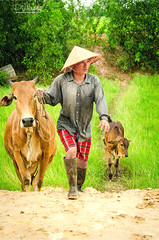
- Atlex
The roots of one of the most popular working dogs, the Shetland Sheepdog, really started out in the Shetland Islands. To be specific, the breed arose as a result of mixing the Scandinavian herding dogs with the Scottish working collie. Those inclined to show the breed later on involved some crosses with show collies. On the islands, sheep were welcome to roam all over the open country, but fencing kept the animals off the croft. This was the environment into which the shetland sheepdog was introduced, and he was busy being a watch dog, companion, keeping livestock away from cultivated areas and or simply rounding them up. While the modern Sheltie is more of a show dog and companion, some continue their working tradition in the UK and in the US. Breeders nowadays aim to include among their programs’ goals the intelligence, willingness and inner drive that has come to be identified with the Sheltie’s unique attitude and disposition.
Interested in looking for a shetland sheepdog with the built-in herding instinct? The instinct to herd is actually inherited, and not learned. But on the other hand, even if the instinct is confirmed even up to the parents of the dog, there must also be the willingness to work with the handler. In selecting a puppy, the hint of a herding instinct can be gleaned by observing the puppy’s interest in pursuing moving objects (such as balls, other animals) and whether he has an outgoing personality. Audacity and self-confidence are plus-points, while aggressiveness or shyness may be detrimental in the long-run.
If you wish to have your shetland sheepdog evaluated for the possibility of a herding instinct, the dog ideally needs to be between six months to one year of age. An organized instinct testing expert might be a phone call away. But you may also need to check first with an experienced trainer to get your dog used to the exposures.
Sheep is most appropriate for testing since they flock the most. Cattle might prove unpredictable for a young dog, and ducks do not flock as well. Working with an older dog, or who has had extensive obedience training, might be like going against the grain since they dog may be focused on the owner, requiring much effort to get the dog to transfer his interest and focus on to the stock. What does the evaluator look for? He or she will look for the dog’s interest in the stock, and how the dog works the animals and makes them change direction. One last bonus tip here is that the evaluator would appreciate seeing the dog counterbalancing him or her by staying on the opposite side of the stock.